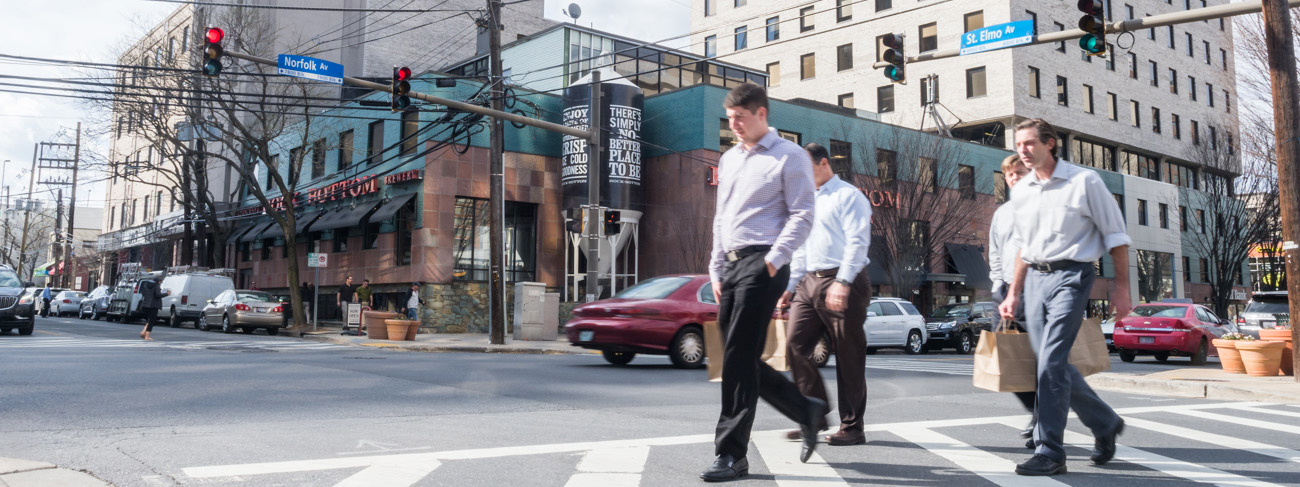One of Thrive Montgomery 2050’s core outcomes, economic competitiveness is key to our county’s future success. The county’s economic performance has been mixed at best since the Great Recession of 2008, which slow job growth and flat household incomes. Because Thrive Montgomery 2050 is primarily focused on land use, it focuses on the aspects of economic development with a strong connection to real estate and public infrastructure to strengthen the county’s ability to compete for economic opportunities by creating great places.
Employers want to locate and expand in places where their employees want to live and work. Well-designed “complete” communities that include a mix of uses and forms with safe and attractive walking and biking infrastructure along with public amenities such as parks and recreational facilities are essential to ensuring the quality of life that employers want and that residents deserve. Quality of place is not a comprehensive economic strategy, but it is a solid foundation for success.
The Plan, then, emphasizes quality of place, amenities, and infrastructure instead of focusing on policies to attract specific types of employers or development designed to accommodate certain employment uses. There is limited value in trying to predict how factors such as technological change or a pandemic, might impact the demand for office space or other aspects of land use and transportation planning. The county has an excess of office space in existing buildings, and flexible zoning already in place in major business districts to accommodate just about any demand that may emerge for development or redevelopment of office buildings in the near to intermediate term. This puts the county in a position to respond and adapt to market changes.
We want to strengthen our economic competitiveness by creating the kind of places where people with diverse choices want to live and work. Thrive Montgomery 2050’s recommendations for land use, transportation, parks, and other public and private infrastructure lay the groundwork for economic development initiatives, and its compact land use pattern and walkable communities supported by an efficient transit network will connect the county’s diverse population to economic opportunities.


